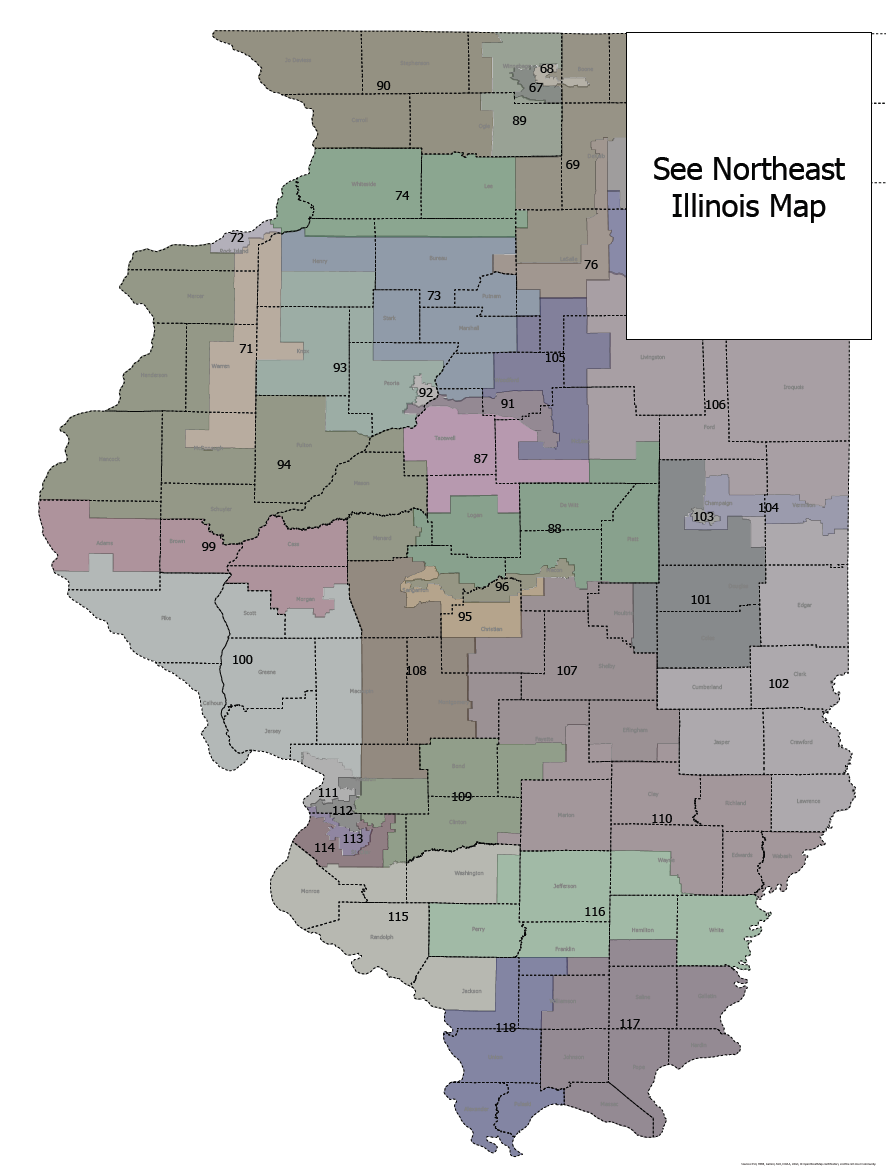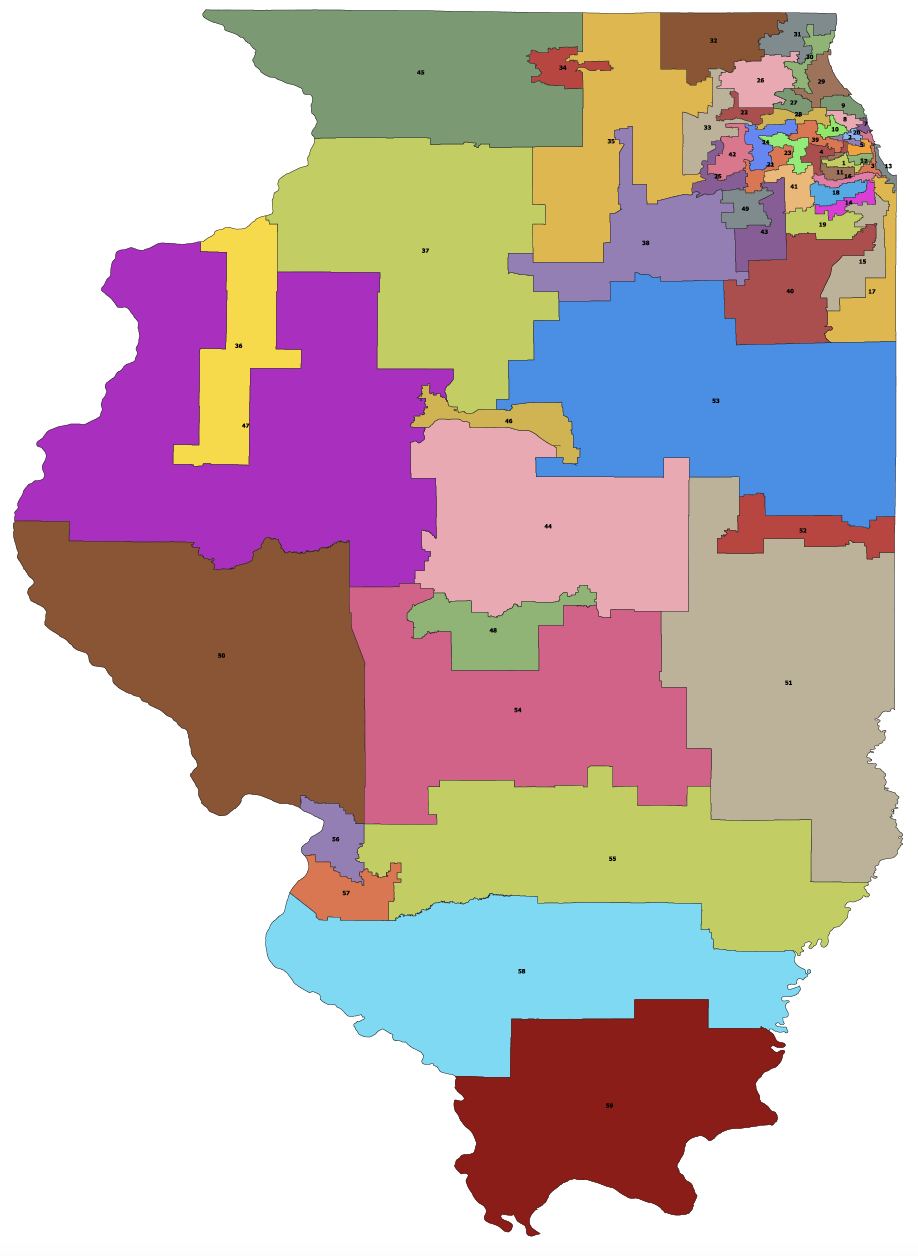Democrats’ legislative maps slam GOP after Pritzker breaks veto promise
Illinois Gov. J.B. Pritzker gave fellow Democrats a very clear signal to gerrymander state legislative maps when he backed off his veto threat and said he trusted them to be fair. Mike Madigan-style maps place 23 Republicans into races against other incumbents.
When Illinois Gov. J.B. Pritzker flip-flopped on his oft-repeated promise to veto any gerrymandered legislative maps, it apparently was a big thumbs-up for supermajority Democrats to draw maps just like Mike Madigan taught them.
The result was maps that:
- Group four Republican Illinois House members into the same district.
- Puts 16 other Republicans into eight districts to face one another, plus one more Republican incumbent placed in a district with a Democratic incumbent.
- Put two Republican state senators into the same district, including one who is pursuing a run for governor.
Ousted Illinois House Speaker Madigan was the master of maps for nearly four decades, maintaining loyalty by delivering districts friendly to his fellow Democrats and guaranteeing contested primaries for those who crossed him. Despite all the hype about the new, improved post-Madigan era in Springfield, so far the legislative maps look the same.
Pritzker had a very different opinion on the campaign trail. In 2018 he promised to veto a map that was “in any way drafted or created by legislators, political party leaders and/or their staffs or allies.” He repeated the promise as recently as January, when his spokesman said Pritzker “has been clear he will veto a partisan map.”
“Fairness” became state legislative maps that create challenges for 23 Republican and three Democrats. The new map groupings and lawmakers’ current districts are:
- 107th Illinois House District: Dan Caulkins (R-101), Brad Halbrook (R-102), Blaine Wilhour (R-107) and Adam Niemerg (R-109).
- 46th Illinois House District: Deb Conroy (D-46) and Deanne Mazzochi (R-47)
- 47th Illinois House District: Amy Grant (R-42) and Seth Lewis (R-45)
- 50th Illinois House District: Keith Wheeler (R-50) and Dan Ugaste (R-65)
- 51st Illinois House District: Chris Bos (R-51) and Thomas Morrison (R-54)
- 87th Illinois House District: Keith Sommer (R-88) and Mark Luft (R-91)
- 90th Illinois House District: Tony McCombie (R-71) and Andrew Chesney (R-89)
- 99th Illinois House District: Randy Frese (R-94) and C.D. Davidsmeyer (R-100)
- 108th Illinois House District: Avery Bourne (R-95th) and Mike Murphy (R-99)
- 115th Illinois House District: Charles Meier (R-108) and David Friess (R-116).
- 23rd Illinois Senate District: Thomas Cullerton (D-23) and Suzanne Glowiak (D-24)
- 55th Illinois Senate District: Jason Plummer (R-54) and Darren Bailey (R-55)
The proposed Illinois House redistricting map is available here.
The proposed Illinois Senate redistricting map is available here.
An alliance of 13 groups, including the Better Government Association and League of Women Voters, blasted the proposed maps for being unfair and using population estimates that Democrats knew were inaccurate.
“The decisions by our current lawmakers will disenfranchise tens of thousands of voices for a decade by creating representative maps that do not include them,” the coalition stated. “Everyone should count. Everyone deserves representation.”
Public hearings on the maps are at 4 p.m., May 25, with a joint meeting of the Illinois House and Senate redistricting committees and at 6 p.m., May 25, with a meeting of the House Redistricting Committee. Then a joint House and Senate committee meeting will be held at 4 p.m., May 26, followed by a Senate committee hearing at 6 p.m., May 26.
Republicans are likely to challenge the maps in the Illinois Supreme Court, not just on their partisan bias but also because they are based on U.S. Census Bureau population estimates rather than the actual head count conducted in 2020. The actual census results have been delayed by COVID-19 disruptions and are not expected until as late as the end of September. Illinois Democrats could potentially lose control of the mapping process if they fail to pass maps by a June 30constitutional deadline.
Democratic state lawmakers also control how districts are draw for the U.S. House. A map that surfaced showed Illinois losing one of 18 congressional districts as a result of population loss, which the mapmakers used to potentially squeeze two Republicans out of the delegation.
A former Illinois state senator who became a U.S. senator and then president said it best when he used his 2016 State of the Union address to call for an end to redistricting in which “politicians can pick their voters, and not the other way around.” So far, fellow Illinois Democrats are ignoring Barack Obama’s admonition.
Pritzker once fought for independent legislative maps, but somehow Illinois ended up with highly partisan maps. Madigan may not be in the Statehouse, but his legacy of corruption is far from gone.


